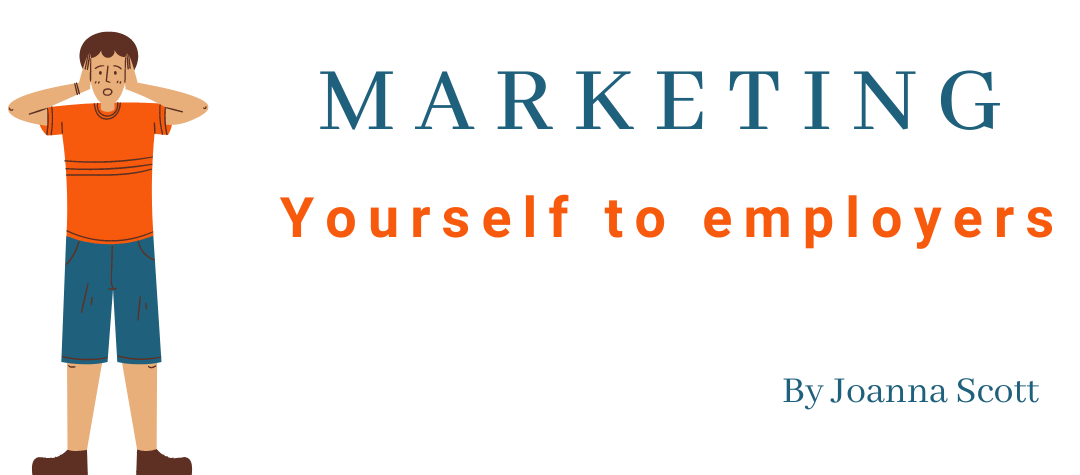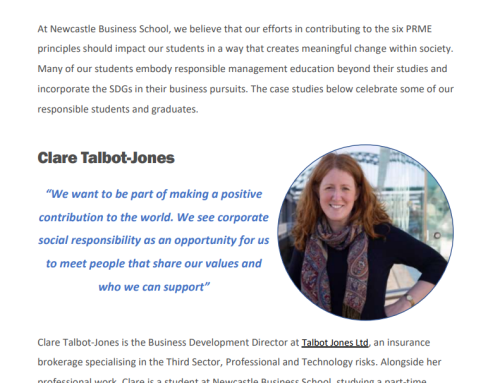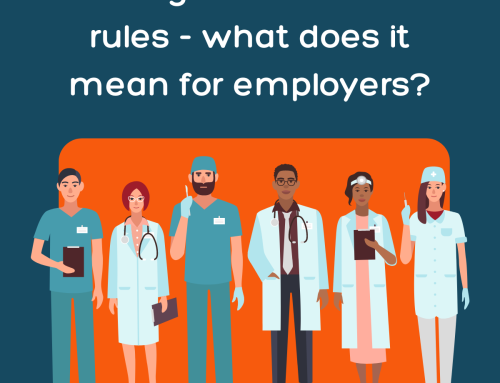In our employability series, our Kickstart Marketing Assistant, Joanna, shares her experience of working with us and her journey to change career path following her studies. This series of blogs provide insightful knowledge from the book From Learner to Earner by Sophie Milliken, independent research and relatable stories about the process of finding employment. Use these blogs to support, inspire and encourage Kickstart team members in your organisation and anyone you know seeking employment.
_________________
Now you have decided on the career path of your choice, it’s time to market yourself to employers through your professional portfolio. The thought of getting started might make you panic a little bit but don’t worry, there is a lot of support out there to guide you through the process.
A CV is the main part of your portfolio though other factors such as social media profiles and cover letters are equally as important in representing you in the best light. So, you need to update an old CV or write one from scratch.
Where do you begin?
First, create or download a decent CV template. If your format is unclear, scrambled or boring, an employer will likely dispose of it before they even read the first sentence of your personal statement. Google docs has free templates to download or Sophie Milliken has kindly provided fantastic templates in From Learner to Earner resources.
Throughout the years, I have received a lot of different tips and advice on what to put in a CV for what type of job role. A lot of the advice I gained was valuable, though a lot of it proved to be useless for the roles I wanted to apply for.
One piece of advice I received was to tailor my personal statement to the job I was applying for specifically. Another was to write a brief description of my experience and skills. Then I was told to make myself sound like an achiever rather than a doer.
So, what do you write in a personal statement?
‘I am a hard-working, creative and motivated individual.’
Are you really?
A lot of CV’s start with more or less the same thing, mine did too for a long time. There are dozens of articles with words to avoid in your CV because they are just overused and empty. It is not necessarily about what words you use, but how you actually use them. Take the quoted sentence above for example. The sentence doesn’t tell an employer how the individual is hard-working, creative or motivated. Something like ‘creative in my ability to come up with new ideas for projects’ or ‘demonstrated my hard-working attitude through volunteering alongside my studies’ would be better as they are more specific and tell the employer a little about your achievements.
From my own experience and conversations with employers, it all depends on the role and how you want to present yourself to that employer. If the job description asks for someone who is ‘creative, bubbly and outgoing’, it would be unwise to say the opposite of these things in your personal statement. Instead, give the employer a brief description of how you have demonstrated these key characteristics in your work or education. ‘I am naturally an energetic individual as I have displayed through taking part in dance shows at university with my peers.’ This tells the employer you are bubbly, but you have displayed it in a different way.
The format of your CV should be bullet pointed as it is concise and easier for employers who will have your CV to read along with possibly hundreds. A survey by the National Citizen Service found employers spend less than 9 seconds looking at a CV. This is why it is so important to get the structure and opening statement right before sending it off to potential employers.
In Sophie Milliken’s book From Learner to Earner, she tells us it is not necessary to have ‘CV’ or ‘Curriculum Vitae’ at the top, but stresses the importance of including your name, address, phone number and email. The length of your CV should be no longer than two pages, it is okay to make the font smaller if necessary but make sure it is still readable! A clear and professional font is a must. Sophie recommends using Arial, Calibri, Times New Roman or Verdana.
Descriptions of your roles should tell the employer what you achieved while you were there whether it was employee of the month, verbal praise, a certificate or an award. There is no need to give details about your cleaning duties at your bar job if they don’t tell the employer why you will be a valuable person for their company. You should also make sure you aren’t repeating yourself if you carried out the same roles in different jobs. Highlight differences in responsibilities and skills as this will show the employer your flexibility as a worker.
Once you have filled out your CV and summarised all of the best parts about your skills and experience, it is probably a good idea to ask someone else to look at your CV for you to fill in any gaps or reword any sentences that may sound flat or clunky. It is always useful to get someone else to proofread as we often miss minor flaws in our own work.
Now you have a complete CV, it is time to consider which jobs you want to send your CV to. Most employers nowadays ask for a cover letter and if they make it optional to include a cover letter, Sophie Milliken suggests in From Learner to Earner that you should always include a cover letter. Employers will be less likely to respond if you haven’t taken the time to send a cover letter in your application. Most employers are aware that CV’s are more generic and that cover letters are more specific to the job and company you are applying for. You are essentially telling the employer why you are interested in their company and how you tell them you would be the best candidate for the role. Use the cover letter to scream about your best achievements, strengths and skills. Sophie Milliken gives us some perfect examples of how to write a cover letter in her book and you can download the templates here.
Social media is also your online portfolio so it is important not to put anything unprofessional online unless you have set those accounts private. A lot of employers will definitely look you up on social media at any stage in the application process and they may like your CV, though if you post inappropriate or controversial content online that goes against the companies values, you are unlikely to get the job. If your social media activity is for personal use, make sure your settings are private. LinkedIn may be the site you use specifically for professional purposes, though I was informed from a marketing expert at MINT Business Club not to use LinkedIn as a CV dump. Instead, include a brief description for each experience and include in your bio a few sentences about what you offer.
Ultimately it is your decision what you write in your CV, cover letter or on social media. However, consider how you want to present yourself to an employer and decide whether your application and social media profiles reflect the truth. Remember, your written application and social media is likely the first way an employer will judge you and the last thing you should want is to miss out on being invited to interview.
You can find more useful information about CV’s through LinkedIn, Sophie Milliken’s resources from her book and Google Digital Garage which I found very informative and useful.
…
Read more about Joanna in Our People and our other blogs in the series to get top tips from Jo about her journey to us, job hunting, applying for jobs and job interviews.
_________
Talbot Jones Ltd is a family-run Chartered Insurance Broker specialising in Third Sector and Professional risks. Get in touch for free insurance advice, review or quotation.
Talbot Jones Ltd incorporates March Insurance Services, a Chartered Insurance Broker specialising in Agricultural and Hospitality Risks.





